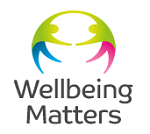- job satisfaction: enjoyment and fulfilment derived from one’s work
- work-life balance: managing time and energy effectively between work responsibilities and personal life
- professional growth: opportunities for career advancement and skills development
- work environment: a positive, supportive, and safe workplace culture
- alignment with values: ensuring work aligns with personal values and goals
Healthy workplace support

A healthy workforce is the foundation of a thriving business, when employees feel well, they perform at their best, driving productivity, engagement, and long-term success.
Did you know?
- in the UK, the total annual economic cost of an unhealthy workforce is estimated to be over £100 million
- 131 million work days are lost to sickness absence every year
- one in eight employees is reported to have a mental health condition
- a total of 11.9 million (29%) of working age people have a long-term health condition
- 42% of employees with a health condition feel that their condition affects their work
- one in ten employees reported having a musculoskeletal condition
WorkWell in Salford
WorkWell is a programme that supports disabled people and people with health conditions to start, stay or succeed in work. WorkWell can offer a range of support, including:
- a personal assessment of your employee’s needs to understand what support might work best for their circumstances
- personalised, goal-based plans to address your employee’s physical, mental wellbeing, and social needs to help them return to and/or thrive in work
- access and referral to local and community-based work and health support services, including:
- musculoskeletal (MSK) assessments and treatment support for conditions which affect all areas of the body including the spine, arms, legs, hands and feet
- support to access non-medical wellbeing support, services and activities, for example volunteering, arts activities, group learning, gardening, befriending, cookery, healthy eating advice and a range of sports
- impartial careers advice, information, guidance and support to access jobs, skills and training, including help to progress in work
- support for you to understand your employee’s needs and advice on how to provide workplace adjustments that support them
Coaching and support
Each individual participating in WorkWell will receive tailored support in the form of one-to-one appointments. These will be with a dedicated Health and Work Coach to review progress and recommend further actions and activities related to the personalised action plan. Participants will typically have up to six appointments with their Coach. These will be at a time and frequency agreed with the participant.
Eligibility
To be eligible, your employees will either be:
- Absent through sickness or facing health-related barriers at work, including:
- a mental health need and/or a musculoskeletal (MSK) condition
- at risk of unemployment through poor health, and are on a community health or elective care waiting list
In addition, individuals must also meet the following criteria:
- Have a home address or address of your GP/local Jobcentre Plus falls within the WorkWell service area, for example Salford or Greater Manchester.
- Be aged 16 or above
- Have the right to work in the UK
- Have told the WorkWell service of a health or disability related barrier to work
How do I find out more?
If you would like to make an initial enquiry and/or to find out more about WorkWell, please email workwellsalford@salford.gov.uk or telephone 0800 952 1000 (Option 2).
Once a referral is received, it will be assessed by the team. Eligible residents will be contacted by a member of the WorkWell team within two working days, and an initial appointment will be arranged with a designated Work and Health Coach. This will be at a community venue at the convenience of the participant within ten working days on receipt of an eligible referral.







Promoting wellbeing and excellence at work
We know that a happy employee is an engaged and productive employee, which is why the importance of a healthy working environment in business cannot be underestimated. A healthy working environment not only benefits everyone working in the business, but it is also crucial for business success, leading to better staff retention and increased profits.
The benefits of a healthy workplace environment include:
- improved health and wellbeing
- greater productivity
- higher performance
- increased job satisfaction
- greater work participation and increased social inclusion
- increased individual, team and organisational resilience
- lower absenteeism rates
- less workplace injury and workers’ compensation claims
- faster return to work
An unhealthy workforce can damage our economy and society due to lost productivity, reductions in income tax receipts, increases in long-term sickness, informal caregiving and increased healthcare costs.
What can employers do to create a healthy workplace?
This web page aims to assist your organisation in supporting the health and wellbeing of your employees. It will guide you in taking positive actions to promote a culture that prioritises employee health and provides deeper insight into supporting those who need additional help.
We understand that there are many support options available, which can sometimes feel overwhelming and difficult to access when you need them most. Therefore, we have created this guide to simplify the process and help you take care of yourself and your employees.
This guide will highlight the best resources that are most beneficial for you and your team, helping you to develop a tailored approach that meets the needs of your staff and organisation.
Prevention and early intervention are the most effective ways to support a healthy work environment.
How can employers create a healthy work environment?
Ensuring your strategy is well-defined will make it more likely to succeed. The initial question to consider is: what defines wellbeing, and how does it align with your organisation's values?
According to the Oxford English Dictionary the definition of wellbeing is ‘with reference to a person or community: the state of being healthy, happy, or prosperous; physical, psychological, or moral welfare’.
The most effective wellbeing policies are those that are tailored to your workforce’s needs.
One of the primary reasons wellbeing programmes fail is that they don’t reflect the needs and preferences of the employees. Involve your employees from the earliest stages to execute a successful wellbeing strategy for your organisation.
Wellbeing wheel for employers

Source: Therapeutic Kneads
Promoting a clean and safe work environment that encourages healthy habits and provides resources for maintaining physical health
Offering health and wellbeing resources, encouraging a supportive and inclusive culture, and promoting work-life balance
Organising team-building activities, promoting a sense of community, and encouraging positive workplace relationships
Encouraging continuous learning, providing opportunities for skill development, and supporting innovative thinking
Ensuring job satisfaction, offering career growth opportunities, and maintaining a positive work environment
Ensuring fair and competitive salaries that reflect the market rates and the cost of living
Creating an environment where employees can find purpose, meaning, and alignment with their personal values and beliefs
Implementing policies that support health, sustainability, and a positive connection with the natural world
Useful links
A healthy team leads to a great experience for your employees and organisation. We have provided some useful resources to support your business on its health and wellbeing journey.
This toolkit provides practical, evidence-based guidance on how employers can support their employees to improve the health and wellbeing of their workforce
This toolkit is to help your organisation support the mental health and wellbeing of your employees
Free resources to support staff mental health
Managing health and wellbeing at work
Support for Voluntary, Community and Social Enterprise (VCSE) sector
Support for Voluntary, Community and Social Enterprise (VCSE) sector
The toolkit includes information and resources which focus on the practical, physical and psychological pillars of wellbeing
A roadmap to achieving better mental health outcomes for those in work
The Disability Confident scheme helps employers recruit and retain great people
An Access to Work grant can pay for practical support to enable your employee to start or stay in work
Supporting anyone working or volunteering with children and young people
Organisations, schools and employers
Mental health support in Salford
Find a series of downloadable resources that are designed to boost your mental health.
Helping organisations support the overall health and wellbeing of their employees
Employment Standards Charter accreditation and supporter network, including information on the Real Living Wage and being Disability Confident
Find out more about business support in Salford
Creating opportunities for people with autism or learning disabilities
Careers, skills and recruitment support for Salford residents and employers
Speak to an Advisor about health checks to ensure you’re accessing all available support
Workplace wellbeing checklist for employers

In order to become a high-performing and responsible organisation, you can make specific commitments to support the wellbeing of your employees. Employers have a moral obligation to care for their staff, and research has evidenced that a healthy and thriving workforce can boost morale and drive performance. Having a workplace wellbeing checklist can guide your business with the steps to take in supporting a healthy workforce.
This workplace wellbeing checklist has been created to support your organisation in taking steps to creating a more positive space for you and your employees. You may wish to adapt this to suit your business needs as it is only for guidance purposes only.
Benefits of having a wellbeing checklist
- ensures comprehensive coverage: it helps ensure that all aspects of employee wellbeing are considered, from physical and psychological health to social and professional development
- promotes consistency: a checklist promotes consistency in the implementation of wellbeing initiatives across the organisation, making sure that no critical elements are overlooked
- facilitates tracking and measurement: it provides a clear framework for tracking progress and measuring the effectiveness of wellbeing programmes, allowing for data-driven improvements
- enhances engagement: by systematically addressing various areas of wellbeing, a checklist can help increase employee engagement and participation in wellbeing initiatives
- supports accountability: it helps hold management and HR accountable for maintaining high standards of employee wellbeing, ensuring that the necessary actions are taken
- encourages continuous improvement: regularly reviewing and updating the checklist encourages continuous improvement in workplace wellbeing practices, keeping them relevant and effective
- demonstrates commitment: having a formalised checklist demonstrates the organisation’s commitment to employee wellbeing, which can improve morale and attract top talent
- identifies gaps: it helps identify any gaps or areas needing additional attention, ensuring a more holistic approach to employee wellbeing
Step 1: secure leadership commitment to workplace wellbeing, by:
- assembling evidence why your organisation is investing time and resources on workplace wellbeing
- ensuring that senior leaders are on board with the idea, and recording their commitment
- delegating tasks to the leaders
- allocating necessary resources and budget, using time and skills already in your workforce
- ensuring a time frame has been agreed to complete each of these steps (1 to 5)
Step 2: understand your workplace and the needs of your employees, by:
- undertaking a workplace needs assessment
- conducting an employee needs assessment, eg a survey or programme of health checks
- analysing and establishing the main focus from the workplace and employee assessments
- maintaining privacy and confidentiality throughout the process
Step 3: engage your employees in the strategy, by:
- collaborating with employees to generate ideas, make decisions, and gather feedback
- promoting and establishing a Health and Wellbeing Committee
- selecting and training wellbeing champions and mental health first aiders
- including health and wellbeing topics in team meeting agendas
- involving employees in identifying the main priorities
- continuing to engage with employees throughout the process
Step 4: develop a plan for identified priorities and take action, by:
- including policy and practice guidelines, organisational activities, and environmental changes within the plan
- gaining approval of the plan from leaders
- preparing wellbeing champions and mental health first aiders for activities
- communicating and promoting activities with all employees, drawing on resources within and outside the organisation
- offering reasonable adjustments and support to employees struggling with their physical health or mental wellbeing
- making plans to monitor, analyse, and evaluate the process on an ongoing basis
Step 5: review and evaluate workplace wellbeing, by:
- continuously recording and monitoring workplace wellbeing activities
- seeking ongoing feedback from all partners and stakeholders about key successes and challenges
- refreshing workplace needs assessments (in step 2) on an annual basis
- repeating employee needs assessments periodically on a three to five year cycle
- assessing change by maintaining feedback on an ongoing basis (repeat steps 2 to 4 if necessary)
